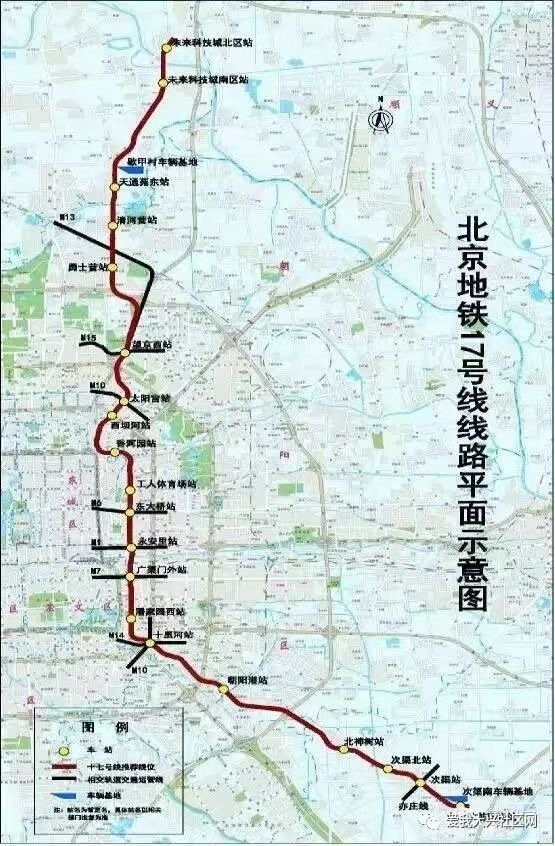The Future of the Beijing Subway in Five Lines
For the longest while now, we’ve been waiting for a few lines to make their debut on Beijing’s subway network – namely Line 3, Line 12, Line 17, Line 22, and Line 28 – but what’s the history of these lines, and how will they benefit passengers once in service?
To find out more, we spoke to Swiss expat and all around Beijing transportation expert David Feng. Feng not only runs his own WeChat account (ID: DavidFengPA) on Beijing, Chinese, and Swiss public transit but also runs his own podcast and has been interviewed multiple times by various Chinese and international media for his input on China's transportation systems and development.
Line 3: The Connection to Chaoyang Railway Station

The most anticipated line coming soon to the Beijing Subway is Line 3, the west section of which is now expected to be fully up and running this summer, according to Feng. Line 3’s western section will stretch 13 stops from Dongsishitiao Station (where it will connect to Line 2) to Dongfeng. Line 3 will run through Sanlitun, Chaoyang Park and Beijing Chaoyang Railway Station.
Considering it’s such a small line by Beijing standards, what’s all the hype about? Line 3 has been in the works for quite some time, since way back in the 1970s, explains Feng, who adds it is so anticipated because it will serve as a connection for Chaoyang Railway Station. However, there isn’t much hope we’ll get to see this connection all too soon, as Line 3’s further eastern and western sections are still on the drawing board.
The delay is mainly due to ongoing struggles by city planners to agree on where the route will go after hitting Zhangzizhong Lu. From here, it could go one of two ways: it could reach further to the north, or it could continue west with additional stops close to the Forbidden City. After the question of northbound or westbound has been settled, Line 3 is still expected to head west from some point until it reaches Tiancun.
Line 12: The 3rd Ring Road Relief Valve

Compared to Line 3, Line 12 has been much more under the radar, which Feng feels is definitely undeserved. Expected to be up and running as early as the end of June, Line 12, officially known as M12, will cover 20 stations, spanning from Sijiqingqiao to Dongbabei (Dongba North), with the possibility of a one stop extension to Haidian Wuluju Station, where it would connect to Line 6.

M12 is big not only because it will take an immense amount of pressure off the 3rd Ring Road, but it would also serve as an extra link to Beijing Capital Airport via Sanyuanqiao Station, which is always beneficial. What’s more, M12 will be especially helpful for us expats since it will reach areas like Lido. The line will also connect to Renmin University, Dazhong Temple, and the China International Exhibition Center, making it one of the busiest when it comes to interchanges.
Line 17: The North to Southeast Connection

While the mystery of when the middle section of Line 17 will be finished still isn’t solved, Feng and others do see a glimmer of hope that it will be with us at the beginning of 2025. After the middle section is up and running, Line 17 should cover 21 stations, consistently moving from north to south until it turns southeast.
It would mainly benefit passengers around the Worker’s Stadium since it would also connect to Dongdaqiao, Yonganli and parts of the city center. It’s been a highly discussed line since its announcement in 2019, with Feng and others anticipating the middle section for quite a while.
Line 22: The Pinggu Line

Known by experts like Feng as “the Pinggu Line”, Line 22 was originally planned to be a fully suburban line covering the northeastern area of Beijing around the 4th Ring. Planners have since decided to extend Line 22 to Chaoyang Lu, the CBD and City Hall East, which while making it more accessible has delayed construction for quite some time, with the line now expected to be open by the middle or end of 2025.

Line 22 will even have a couple of stops in Hebei province before returning to Beijing at Pinggu Station, meaning the Pinggu Line will aid people living in districts east of the 4th Ring with their commutes to the city center, which will probably tone down car traffic quite a bit. Feng also expects that Line 22 could connect the city center to Zhongguancun in the future.
Line 28: The CBD Express

Also referred to as the “CBD Express”, Line 28 isn’t just going to be a congestion reliever, going from Dongdaqiao through the CBD and into Shuangjing, but it will connect two important railway stations: one planned for Guanghua Lu, and the more remote Beijing East Railway Station. Adding a link to the latter might make it feel less remote, and in turn, make the station more popular for long-distance travel. What's more, the line is also expected to extend up to Dongzhimen. Unfortunately, even though it's been speculated the CBD Express could be finished by the end of 2024, Feng believes a more realistic opening time is 2029 for the first section, with the extension to Dongzhimen coming later.
All in all, we’re extremely keen to see how these new additions will have an impact on our lives and getting around Beijing.
READ: Beijing News You Might Have Missed This Week, May 18
Images: Unsplash, Beijing Evening News (北京晚报), 北京朝阳, Wikimedia Commons, courtesy of David Feng







